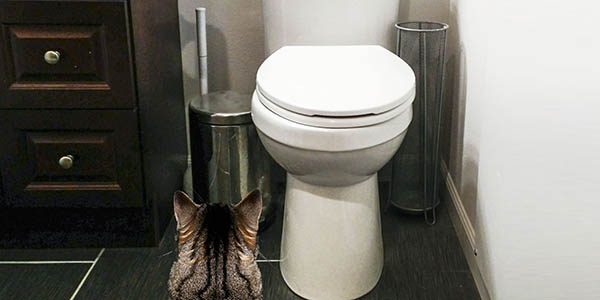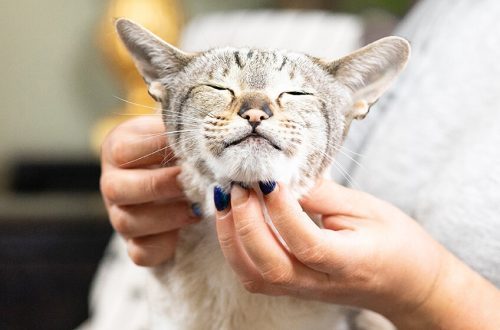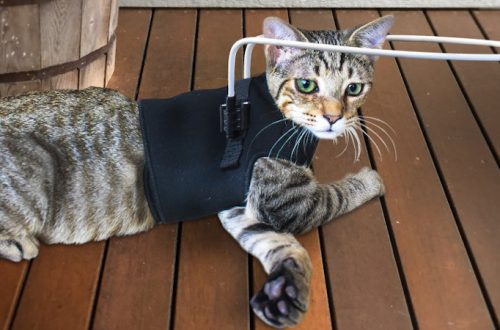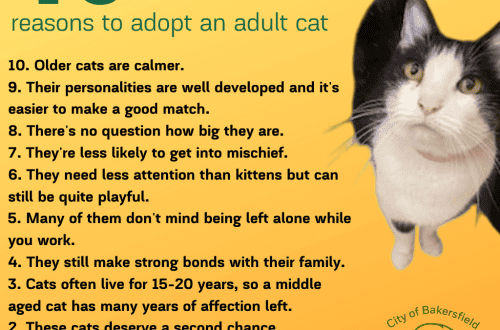
Why the kitten does not go to the toilet and how to help him
Contents
The kitten does not go to the toilet in a small way
A kitten begins to go to the toilet on its own about a month after birth. Until this time, the baby undergoes the final formation of the nerve endings of the organs of the urinary system, the formation of reflex arcs and other processes associated with the regulation of urine output. During the first 3-4 weeks of the animal’s life, the outflow of urine is carried out by mechanical stimulation of the abdomen by the mother cat. Licking the kitten, she, in fact, makes a massage, due to which there is an involuntary outflow of fluid.
A grown-up baby walks in a small way about 5-10 times a day – depending on age, drinking regimen and other factors. In an adult animal, urination can occur 1-5 times a day.
Causes of urinary disorders
The reasons why a kitten does not go to the toilet in a small way may be related to diseases or not depend on health.
Causes independent of the baby’s physical health:
- stress associated with separation from the mother, change of scenery, fright, trip, and so on;
- the kitten does not drink much.
Among the diseases that provoke violation of urination, note:
- spinal injury (nervous regulation of the process is disturbed);
- prostate disease in males;
- pathology of the uterus in females (prolapse, ectopic pregnancy);
- anomalies in the development of the organs of the urinary system;
- urolithiasis (stones block the urethral ducts);
- cystitis (inflammatory process in the bladder against the background of infection);
- kidney failure;
- surgery, such as castration.
Often provoking factors are: obesity and inactivity, unbalanced nutrition, pathologies of the heart and blood vessels, taking medications for a long time, infections.
Of great importance is the nutrition of the kitten, as well as heredity. So, in Persians and Siamese breeds, kidney failure is more often detected. In animals that do not have hair, there is a lack of thirst, they drink very little (for example, sphinxes). Representatives of the British, Abyssinian, Himalayan breeds often suffer from kidney pathologies. Knowing such features of your pet, you should be careful about his diet.
How to understand that it is difficult for a kitten to go to the toilet in a small way
Signs of urinary incontinence in a kitten:
- plaintive meowing in or near the tray;
- tension during attempts to go to the toilet in a small way;
- meowing during the excretion of urine;
- very dark urine with an unpleasant odor, traces of blood, in a small amount, etc.;
- restless licking of the genitals before or after visiting the tray;
- tense, painful abdomen.
If there are no signs of urine in the tray during the day, you must, first of all, carefully inspect the room. Perhaps the kitten has found a more secluded place. If nothing suspicious is found, and the above symptoms are present, it is best to take the pet to the veterinarian. Urinary retention can manifest itself not only in an acute form, but also proceed chronically, imperceptibly undermining the health of a cat.
Dangerous consequences
In the absence of urination for more than a day or a sharp decrease in the volume of urine excreted, the risk of acute renal failure increases. It also increases the likelihood of kidney stones. Sudden kidney failure is fatal.
How can the host help?
If the kitten does not go to the toilet in a small way and he has the above symptoms, you need to contact your veterinarian for a diagnosis. At home, before visiting a doctor, you can do the following: warm the baby, for example, wrap him in a warm blanket, give water with a pipette, a small rubber bulb, a syringe. It is not worth warming the stomach, this can provoke an increase in the inflammatory process (if any). You can not massage or actively stroke the kitten’s stomach – if the cause is stones, this can lead to bladder injury. Also, do not give your pet any medications.
Veterinary help
At the clinic, the veterinarian will conduct an examination and, based on complaints, prescribe an examination, which may include:
- blood and urine tests;
- Ultrasound;
- X-ray
- cystography.
In an acute emergency, the kitten will undergo a urethral catheterization under anesthesia. In case of severe intoxication, a dropper will be placed.
Medications are prescribed in accordance with the survey data obtained. In severe cases, it will be necessary to leave the kitten in the clinic for some time for further observation and treatment.
The kitten does not go to the toilet in a big way
As in the case of urination, during the first month of life, the kitten cannot independently and voluntarily go to the toilet in a big way. This function is taken over by the mother-cat: with the movements of the tongue, she stimulates the peristalsis of the baby’s intestines, which leads to defecation.
Breastfeeding continues until the kitten’s first teeth begin to appear. This happens around 3 weeks of age. Eating mother’s milk, the baby goes to the toilet in a big way up to 10 or more times a day.
By the end of the first month, the kitten begins to eat additional food and move actively. As a result, the feces become thicker and more shaped, and the innervation of the intestine is finally established. By this time, the intestinal microflora is finally formed. In a month, the baby goes to the toilet on his own, on average, 4-6 times a day. He no longer needs maternal help.
As soon as the kitten completely refuses mother’s milk, it is transferred to regular food. Normally, this should happen at about 2,5 months. However, kittens are often “taken apart” before this time, which leads to indigestion and problems with defecation. At this age, the baby walks in a big way almost like an adult cat – 1-3 times a day. It is this time that is considered the best moment for accustoming to the tray.
Why can’t a kitten go big
A condition in which a kitten cannot go to the toilet in a big way is called constipation. It can be episodic, for example, when changing the diet, or it can be observed for several days. In the latter case, severe intoxication of the body occurs, which, coupled with a number of reasons, can lead to the death of the animal.
Reasons that are not related to somatic disorders are any stressful situations: moving, the appearance of a new family member, pet, weaning from the mother, being too strict, rearranging furniture, and so on. Of great importance is the change of nutrition, the transition from natural to dry food (and vice versa) or food from another manufacturer. In addition, a kitten can swallow foil, a small toy, its own hair, which will lead to intestinal obstruction. Congenital features of the body may also take place: if a pet rarely goes to the toilet in a big way, but is active and develops well, you don’t have to worry about his health.
Diseases due to which the kitten does not go to the toilet in a big way:
- decreased motility of the intestinal wall;
- distended intestines (megacalon);
- neoplasms in the gastrointestinal tract;
- scarring of the intestinal walls;
- helminthiases;
- inflammatory processes in the gastrointestinal tract;
- hernia;
- congenital anomalies of the intestine;
- postoperative period.
In any case, a prolonged lack of bowel movement in a kitten requires an examination at a veterinary clinic.
What symptoms to look out for
Signs of constipation in a kitten include:
- tension and ineffectiveness when trying to go to the toilet;
- compacted, swollen and painful abdomen;
- nervousness;
- meowing for no apparent reason;
- refusal of food.
In severe cases of intestinal obstruction, vomiting and fever are observed.
How can the host help?
You can provide first aid at home only if you are sure that there are no pathologies, for example, there has been a change in nutrition. Otherwise, it is unacceptable to resort to any action before the examination.
Assistance consists of the following activities.
- Setting microclysters. It is carried out according to the instructions. Inadmissible for intestinal obstruction!
- Warming the abdominal area with a heating pad or warm cloth.
- Vaseline oil. You can give it with a syringe drip so that the pet swallows it on its own. Dosage: 2-4 drops 2-3 times a day.
- Massage the abdomen in a clockwise direction.
- Moisten a soap peg with water and insert into the kitten’s anus.
It is impossible to give a pet laxatives without a preliminary examination and a doctor’s prescription.
If the measures taken independently at home do not work, the animal must urgently be shown to the veterinarian.
Why constipation is dangerous
If the kitten does not go to the toilet in a big way for a long time, this can lead to blockage of the intestines. As a result, complications are possible: rupture of the intestinal walls, peritonitis, intoxication, death of the animal.
Veterinary help
At the doctor’s appointment, it is advisable to indicate in all details from which moment the kitten had problems with defecation, to clarify the details of nutrition, activity, lifestyle of the pet and other features. Tests may be required to make a diagnosis:
- blood tests, feces;
- x-ray intestines;
- Ultrasound.
In difficult cases, the baby will undergo surgery, after which, perhaps, he will be left in the hospital for further observation. In a milder situation, the veterinarian will prescribe the necessary medications that soften the stool, stimulate peristalsis, and improve bowel function. If necessary, the clinic will give the pet an enema.
preventive measures
Before you get a kitten, you need to pay attention to a number of points.
- The cat should already be able to eat independently.
- The transition to another type of food or type of food should occur gradually.
- If the diet is dominated by dry types of food, you need to monitor the baby’s drinking regimen. Clean water should always be freely available. Some cats prefer running water from the tap. In this case, you need to put a small fountain or other device on the floor.
- If the cat is domestic, it must be accustomed to the tray. Often, former owners give away a pet along with its tray.
- A baby at the age of 1 month is too small, so separation from the mother is a big stress for him. It’s good if they give the bedding (or a small part of it) along with it, which retained the smell of the mother cat.
- For good peristalsis, the kitten must be active. You should take care of the availability of various toys and entertainment.
- It is necessary to timely take stool tests for helminthiases. Ask your veterinarian what medicines you can give your kitten to prevent helminthic diseases.
- You should also consult on the issue of first aid if necessary: what drugs can be given, in what dosage.
Do not forget that cats react strongly to external living conditions. When changing the scenery and in other situations, do not forget about a small pet. The kitten should not be left alone in the changed conditions for him.





